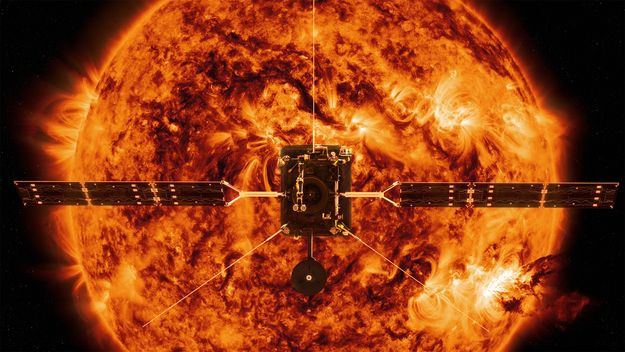ESA Shares First Data Collected By Solar Orbiter In Space

KEY POINTS
- The Solar Orbiter has started collecting data on solar winds
- The orbiter's boom allows the spacecraft to collect accurate information
- ESA will calibrate the orbiter's other instruments until April
The Solar Orbiter launched by the European Space Agency (ESA) has provided its first measurements taken from space after its official launch. The data collected by the spacecraft provides accurate measurements of the electromagnetic characteristics of solar winds.
ESA launched the Solar Orbiter on Feb. 10 with the objective of collecting valuable information about the Sun. To carry out its mission, the spacecraft has been equipped with various instruments designed to study its surroundings.
One of the instruments installed on the Solar Orbiter is the magnetometer, which is mounted on a 14-foot long boom. The Solar Orbiter deployed its boom on Feb. 12.
Using this instrument, the Solar Orbiter was able to measure the electromagnetic characteristics of the charged particles emitted by the Sun in the form of solar winds. According to Tim Horbury, the principal investigator for the magnetometer, installing the instrument on a boom will prevent it from being disrupted by the orbiter’s electrical activity.
This enables the instrument to collect accurate and unobstructed data regarding solar winds.
“We measure magnetic fields thousands of times smaller than those we are familiar with on Earth,” Horbury said in a statement. “Even currents in electrical wires make magnetic fields far larger than what we need to measure. That's why our sensors are on a boom, to keep them away from all the electrical activity inside the spacecraft.”
Through the data collected by the magnetometer and other instruments of the orbiter, ESA’s scientists were able to measure the electromagnetic activity before, during and after the boom was deployed. The differences in the measurements enabled the scientists to differentiate and isolate which electromagnetic activities are related to solar winds and those that are not.
By combining the data collected by the orbiter’s instruments, the scientists will be able to analyze the Sun’s solar activities completely. Calibration of these instruments will extend until April, providing the scientists with enough time to check and demonstrate their accuracy.
"The 10 instruments onboard our mission will be playing together like instruments in an orchestra,” project scientist Daniel Muller stated. “We have just started the rehearsal, and one by one, additional instruments will join. Once we are complete, in a few months' time, we will be listening to the symphony of the Sun.”
© Copyright IBTimes 2024. All rights reserved.





















